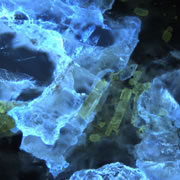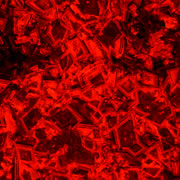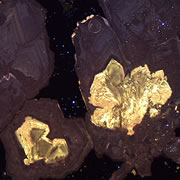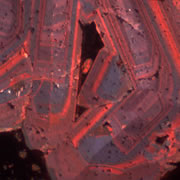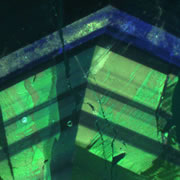Optical Cathodoluminescence Microscope Stage
Image Gallery
Scientific Papers
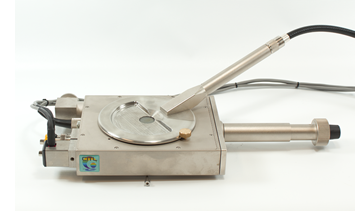 Overview
Overview
CITL are specialists in Cathodoluminescence, the low cost way to analyse most materials. With Cathodoluminescence you can achieve the same information as with an Electron Microscope but at a fraction of the cost and time, as no special preparation is required.
The Optical Cathodoluminescence Stage can be mounted to most optical microscopes, whether transmitted or reflected light, with a large choice of techniques.
The chamber accepts both solid accepts both solid (to 15mm thick) and thin sections. The basic cathodoluminescence system can be enhanced by the addition of Optical Spectral Analysis (OSA) or Energy Dispersive X-Ray Spectrometry (EDX). Measurements of the same specimen position can be made with these analytical attachments when used concurrently.
Please ensure you read the equipment requirements.
Specifications
STAGE
- Full movement and viewing – 58mm x 50mm sections
- Sample thickness to 15 mm as standard
SAMPLE CHAMBER
- Base window for transmitted light microscopy for standard polished geological sections
- Vacuum manifold with automatic precision vacuum control valve
- Solid-state pressure gauge, automatic vent valve, KF direct connection for vacuum pump
- Chamber electron tube
- Electrical feed-through
- Spacer ring to increase sample thickness
OPTIONS:
CHAMBER TOP PLATE incorporating electron tube
Choice of TP5 or TP9 Top Plate included in standard unit (either Top Plate available as additional item):
- TP5 with 5mm WD for objectives with 2.5 X and above magnification
- TP9, larger window top plate with 9 mm WD for objectives from 1 X and above
MICRO-CONTROLLED ELECTRONICS UNIT
- Tube supply – 4kV to 30kV and 20uA to 2mA. Tube current, voltage electronic/vacuum stabilised
- Controls – Pre-select tube voltage, tube current values
- Switch select – Insert sample, operate mode: automatic or manual, tube voltage on/off
- Alpha numeric display – Tube voltage, tube current, vacuum, operating mode and state, diagnostics for all internal power supplies, control values
- PC interface – RS 232
- Preset controls – Tube power, voltage limit, current limit, display auto brightness
- Indicators – Vacuum pump, vacuum ready, kV on, tube supply limits, vacuum control valve operation
- Tube safety – Interlock to vacuum, external link present
VACUUM
- Precision automatic control valve, automatic vent valve. Input port air, helium, argon or other gas
- Measurement – solid-state pressure gauge, indication – alpha- numeric display
- Operation – touch switch, automatic vacuum controlled tube high voltage & current – vent
- Interlock to high voltage
POWER REQUIREMENTS
- Electronics 85-265V AC 50-100HZ 150VA max
- Switched vacuum pump load 850VA max (voltage to be specified when placing order)
- Total load 1000VA
TECHNIQUE OPTIONS
- Analytical top plate with solid state peltier cooled X-ray detector for EDX
- Optical spectroscopy
Technical Diagrams

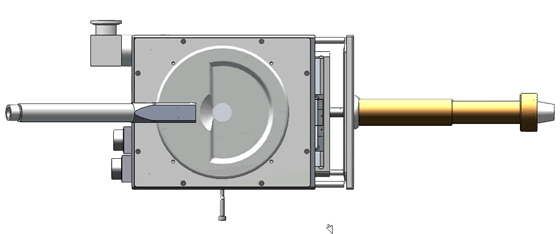
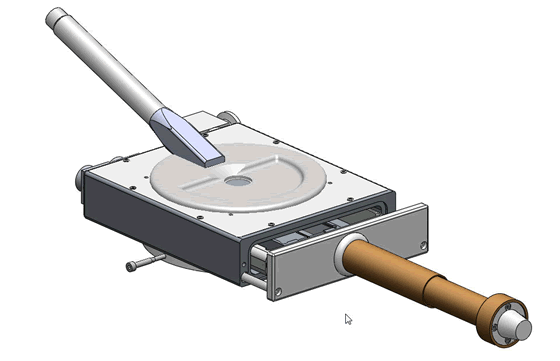
Requirements
Microscope Considerations
- Lenses need to have a minimum working distance (W.D.) of 5mm (TP5 Top Plate) or 9mm (TP9 and ATP). Max W.D. should be as close to Minimum W.D. as possible
- Lenses with a large numerical aperture are preferred. Cathodoluminescence is an intrinsic property and extra brightness cannot be obtained simply by increasing electron current or kV without damaging the sample. So Lenses should be as close to the observation window with as large an N.A. as possible so that maximum light is collected
- Microscopes should have the minimum number of filters in the observation path
- Collection (camera) ports should offer a 100% transmission option to achieve minimum collection times
- Digital camera requirements are similar to those for fluorescence microscopy and a cooled camera is preferred
- The microscope stand should be as sturdy as possible and the stage must be able to take the weight of the chamber (4.5Kg in the Z axis) without showing any focus drift
CL Room
- Because Cathodoluminescence is a low light intensity it is necessary for the room in which the unit is installed to have black out facilities. Whilst bright samples can be viewed in normal light, most samples require a darkened or blacked out room
- A room vent is recommended
- Whilst air conditioning is not a must, the conditions in the room should not exceed Temperature Range +10 to +30 deg C
- Rel Humidity Max 70% non-condensing (storage must be non-condensing)
- The Mains electricity supply must include a Clean Ground reference

